![]()
![]()
![]()
Use LEFT and RIGHT arrow keys to navigate between flashcards;
Use UP and DOWN arrow keys to flip the card;
H to show hint;
A reads text to speech;
99 Cards in this Set
- Front
- Back
|
In Eukaryotes, the transcribed sequence of a gene consists of coding regions called ______, which in most genes are separated by noncoding regions called ________ |
1. Exons 2. Introns |
|
|
What is the genetic code? |
a triplet of bases (a codon) specifies a particular amino acid in the growing polypeptide chain |
|
|
Define Point Mutation |
single base pair substitutions * coding region |
|
|
Define Transitions Mutation |
a substitution of a purine for a purine (A<-->G) or a pyrimidine for a purine |
|
|
Define Transversions Mutation |
of eight possible kinds, are substitutions of purines for pyrimidines |
|
|
Define Synonymous Mutations
|
a point mutations that does not change amino acid sequence
|
|
|
Define Nonsynonymous mutation
|
result in amino acid substitutions, have little or no effect on the functional properties of the polypeptide or protein and no effect on the phenotype. May have substantial consequences. |
|
|
Define Frameshift Mutations (insertion and deletion) |
1 more bp being inserted or removed from an amino acid sequence |
|
|
Define Discrete trait and Continuous Trait |
1. Discrete Trait: which can only take a finite number of values (usually integer), such as how many members in your family
2. Continuous Trait: which, IN PRINCIPLE, can take any value. In practice, the measuring instrument and recording will often result in the continuous trait being converted to a discrete one |
|
|
Gregor Mendel (1822-1884) |
- Born in Austria - Had love for nature -experimented with several plants including peas. -interested in process of hybridization |
|
|
What did Mendel conclude? |
- Inheritance is not "blended", are controlled by genes -made Law of Segregation - Dominant (dominant one is always expressed)and recessive, genes and alleles (2 alleles, only 1 is passed) |
|
|
Mendel's Law of Independent Assortment |
- each pair of allele segregates independently |
|
|
Define Mendelians
* Population Genetics |
traits evolve with large mutational jumps |
|
|
Define Biometricians
* Population Genetics |
evolution by gradual change in continuous traits |
|
|
IBD |
identity by descent |
|
|
Algorithm of Natural Selection |
- More individuals produced that can survive and reproduce -Inheritance |
|
|
Define Variation
* Upload chart from lecture |
Variation in survival and reproduction - Evolution is the combination of random (variation) and non random (sorting in the variance mutation) |
|
|
Define Blending Inheritance |
* offspring= mean of parents - in next generation, the most abundant trait will fall right in the middle between the large and small - if you get a favorite variation, under selection it will go under the original |
|
|
First Hypothesis
* put picture from slides |
In the f2 you get the same ratio aka the 3:1 ratio |
|
|
Second Hypothesis
*put picture from slides |
The traits are seperated |
|
|
Inversion Mutation |
the connection between genes break and the sequence of these gees are reveresed |
|
|
Duplication Mutation |
a chromosome is duplicated or replicated, resulting of multiple copies of that region |
|
|
Define Translocation |
when chromosomes rearrange |
|
|
The 6 conditions for Hardy Weinberg Equilibrium |
1. Sexual Reproduction 2. Random Mating 3. Non-overlapping Generation 4. No mutation 5. No migration 6. No Genetic Drift |
|
|
What is Allele Frequency? What is Genotype frequency? |
1. Allele Frequency: the frequency of an allele relative to that of other alleles in the same gene in a population 2. Genotype Frequency: is how often a gene or chromosome determines a specific characteristic or trait that shows up in a group |
|
|
Allele Frequency example |
Find A ex) PA=0.4 Find a ex) Pa=0.6
|
|
|
Genotype Frequency example |
PAA= p^2 PAa= 2pq Paa=q^2 |
|
|
What does F mean in the HWE? |
It is the proportion of inbreeding - the probability of IBD - 0<-F<-1 Inbreeding coefficient |
|
|
Expected/Observed equation under HWE |
Obs: 2pq(1-F)=Hobserved |
|
|
Imbreeding Depression |
reduction in fitness, mutation may occur such as deleterious recessive alleles |
|
|
Wright Fisher Model |
the random sampling of AA and Aa - losing little a, making it have an allele frequency of (p:1 to q:0 from original p:0.5 and q: 0.5) |
|
|
smaller populations and Genetic Drift
|
smaller populations lead to faster genetic drift.....faster fixcation in the alleles
|
|
|
Loss of alleles in Gene Drift |
if you have small population of drift |
|
|
The probability of fixation |
starting allele frequency |
|
|
How is Effective population size abbreviated? |
Ne |
|
|
FSI and FST |
1. FIS: is individuals and subpopulation 2. FST: is subpopulation and total |
|
|
What happens to allele size if you have imbreeding? |
You will have an excessive amount of alleles |
|
|
What happens to drift if you have a large population size? |
much slower drift |
|
|
What happens to drift if you have a small population size? |
much dramatic and faster drift |
|
|
Why did Darwin write so much in Origin of Species? |
1. It provides an analogy for natural election 2. direct evidence of natural selection
|
|
|
Neutral Theory holds that most allele fixation events are the result of: |
genetic drift |
|
|
_______ typically reduces genetic variation, while ______ maintains it. |
1. Genetic Drift 2. heterozygote advantage |
|
|
At equilibrium in an island model, Fst at neutral loci: |
depends only on Nm, the product of population size and migration rate
|
|
|
Which of the following can be used to detect selection from molecular data? |
1. proportion of admixture across loci 2. ratio of synonymous to non-synonymous substitutions 3. extent of linkage disequlibrium around loci 4. relative values of Fst across loci |
|
|
______ typically increases LD around a locus, and ______reduces it |
1. selective sweep 2. recombination |
|
|
Define Effective Population Size
|
Effective # of individuals contributing to next generation
|
|
|
Define Frequency Dependent selection
|
natural selection in which Fitness of a trait varies as a function of the frequency of that trait in the population
|
|
|
Define Sexual selection
|
differential reproductive success as a result of a variation in the ability to successfully mate
|
|
|
How does hidden population structure lead Fis>0?
*Short answer |
With hidden population structure, mating is more likely within subpopulations than between. If allele frequencies differ among subpopulations, this non-random mating will produce an excess of homozygotes relative to the overall expectation, leading to Fis>0
|
|
|
Why is the substitution rate of neutral mutations equal to the mutation rate, independent of population size?
*short answer |
1. New mutation rates each generation is: 2Nemu
2. The probability of any of these mutations reaching fixation by drift is its starting allele frequency: 1/2Ne 3. Rate of substitution: mu *If you times them by eachother, only mu will be left |
|
|
In some mice, individuals with genotype tt do not survive yet heterozygotes (Tt) exhibit segregation distortion so that most of their gametes carry that t allele. Use the concept of levels of selection to explain how this maintains both the T and t alleles in the population
*short answer |
Segregation distortion in heterozygotes produces selection for t at the genocide level. The conflict between these two levels f selection leads to a balanced polymorphism at this locus
|
|
|
What was the first type of molecular data?
|
allozyme aviation ➡ protein alleles
|
|
|
if you look at any gene....
|
they found lots of genetic variation
|
|
|
What is non selection forces? (neutral forces)
|
1. mutation
2. drift |
|
|
Natural Selection
|
predicts low level of genetic drift
|
|
|
what did Lewiston discover?
|
Allozyme variation into he 1970s
|
|
|
Substitution
|
New mutation reaches fixation
|
|
|
Probability of fixation = initial frequency
|
if it is a new mutation, frequency is 1/2N
|
|
|
what is mutation rate number?
|
10 ^-9 is rate of nucleotides sequence
|
|
|
2Np*1/2N = mutation rate
|
at population level, 2NP
-what's probability of it reaching fixation is 1/2N -substitution rate is equal to mutation rate (under neutral Theory, you would expect the molecular clock) |
|
|
what is the mutations rate equations and what does it mean?
|
2NP = # of new mutations per generation
1/2N= probability that one will fixate |
|
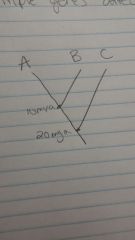
Molecular Clock
|
*Substitution rate = mutation rate
rate of change constant - amount of change is same over stretch of time |
|
|
Neutral theory
|
most evolution of molecular/genetic level is the result of neutral forces. ex. genetic drifts and mutation
|
|
|
is allele fixation events the result of genetic drift?
|
yes
|
|
|
Neutral theory holds that most allele fixation events are the result of:
|
generic drift
|
|
|
______ and_ ________ are 2 types of selection that maintain genetic diversity?
|
1. Negative frequency
2. heterozygous advantage |
|
|
At equilibrium in an island model, Fst at neutral loci:
|
depends only on nm, the product of population size and migration rate
|
|
|
Hardy-weinberg equilibrium:
|
is reached in just one generation of random mating
|
|
|
define Coalescent theory?
|
1. lineage of alleles backward in time
2. relates population size to the timing of coalescence 3. is based on a Wright- Fisher model |
|
|
According to Gregory Mendel, the 3:1 ratio of phenotypes in an F2 cross?
|
1. demonstrates the principle of segregation of alleles
2. fits a model of dominant and recessive alleles |
|
|
Darwin's finches experience temporal fluctuations in selection, meaning that
|
1. phenotypic diversity remained over time
2. sometimes larger beaks are more fit, sometimes smaller beaks are more fit |
|
|
A new mutation has ______ than the existing allele. it _______ in the population in a process known as a selective sweep
|
1. higher. fitness
2. increases |
|
|
In white throated sparrows, white striped females mate with tan striped males., and tab striped females with white striped males is known as
|
disassortative mating
|
|
|
Substitution rates of synonymous (silent) mutations are often highly correlated with time. This is predicted by Neutral theory because:
|
1. synonymous mutations are neutral
2. Motoo Kimura said so |
|
|
Effective population size definition?
|
is the effective # of individuals that contribute to the next generation
|
|
|
Indel definition?
|
a mutation that involves deletion or insertion of one or more nucleotides in a sequence
|
|
|
Hidden population structure definition?
|
when mating more likely to occur in subpopulations than between subpopulations
ex) mice on either side of barn w/cat in middle of barn preventing migration |
|
|
SNP definition
|
-Single Nucleotide Polymorphism
-occurs when. one nucleotide is substituted with another |
|
|
Inbreeding definition
|
individuals of a population that are closely related mate with each otger, which can be measured by an F value (positive F value correlates to inbreeding; higher f value =more inbreeding)
|
|
|
Balancing selection definition
|
a form of natural selection that maintains stable frequencies of 2 or more phenotypic forms of a population.
|
|
|
Directional selection
|
form of natural selection in which the entire curve moves
-occurs when individuals in one end of a distribution curve have a higher fitness than individuals in the middle or at the other end of the curve |
|
|
Stabilizing selection
|
a form of natural selection that favors intermediate variants by acting against extreme phenotypes
|
|
|
disruptive selection
|
a single curve splits into 2
-occurs when individuals at the upper and lower end of a distribution curve have higher fitness than individuals near the middle |
|
|
selective sweep
|
act to reduce levels of linked silent polymorphism
-generates positive levels of neutral polymorphism and levels of recombination |
|
|
Linkage Dependent
|
tendency for certain alleles at 2 linked loci to occur together more often than expected by chance
|
|
|
E. coli selected to grow at 40 degrees show reduction growth rate at 37 degrees. this is result of what?
|
antagonistic pleiotropy
|
|
|
Define Fitness
|
the lifetime reproductive success of a biological entity (allele, individual, etc)
ability to survive and reproduce |
|
|
Is evolution by natural selection a random process? non-random? both? explain?
|
Both: the production of variation by mutation is random, but the selection of variants on the basis of differential fitness is non-random
|
|
|
Why are p2, 2pq and q2 the expected genotype frequencies under Hardy Weinberg Equilibrium?
|
Under HWE assumptions, genotype frequencies are produced by randomly sampling two alleles to form each diploid individual. The probability of randomly picking two A alleles is p x p=p2 (same for q2). For heterozygotes: pick A and a (probability p x q=pq) and it's sum 2pq
|
|
|
You conduct a chi-square test for Hardy Weinberg Equilibrium and find that p<0.001. what does this mean?
|
The genotype frequencies deviate significantly from HWE and one or more assumptions of HWE is violated
|
|
|
Further, you estimate Fis: 0.35, What are 2 possible explanations for this result?
|
1. Inbreeding
2. assortative mating 3. hidden population structure 4. natural selection |
|

|
B
|
|
|
If a neutral allele A is at a frequency of p=0.3, what is the probability that it will eventually fix by genetic drift?
|
0.3
|
|
|
If a selectively advantageous allele B is at a frequency of p=0.01, is it more likely to reach fixation in a small population or large population?
|
Large population (bc selection overcomes drift better in a large population)
|
|
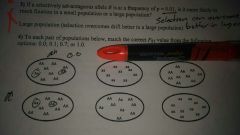
|
1. Fst =0.0
(mostly homozygous with some heterozygotes) 2. Fst=0.7 (top is homozygous recessive and bottom is homozygous dominant, minus the 3 That are heterozygotes) 3. Fst=1 (one circle s homozygous dominant and bottoms circle is homozygous recessive) |
|
|
Blending Inheritance:
|
was used as a counterargument to Darwinism natural selection
|
|
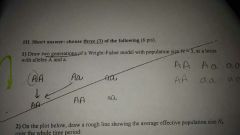
|
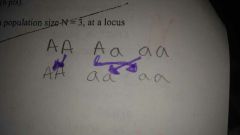
|
|
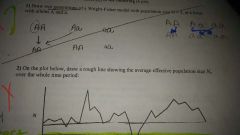
|
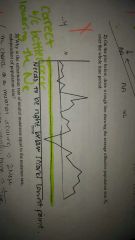
|
|
|
If a selectively advantageous allele R is at a frequency of p=0.01, is it more likely to reach fixation in a small population or a large population? why?
|
more likely to reach fixation in a large population because selection is more effective in large populations than drift is.
|

